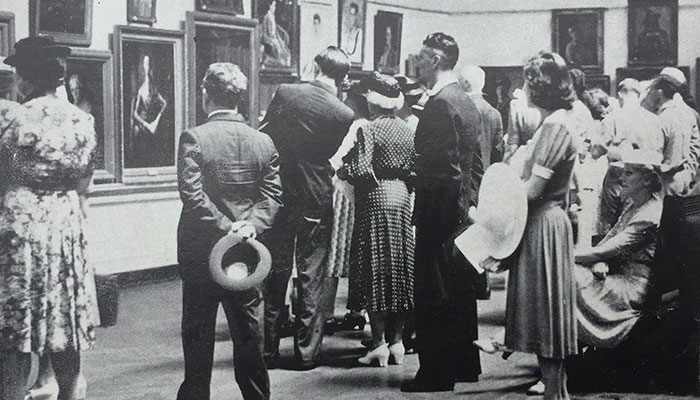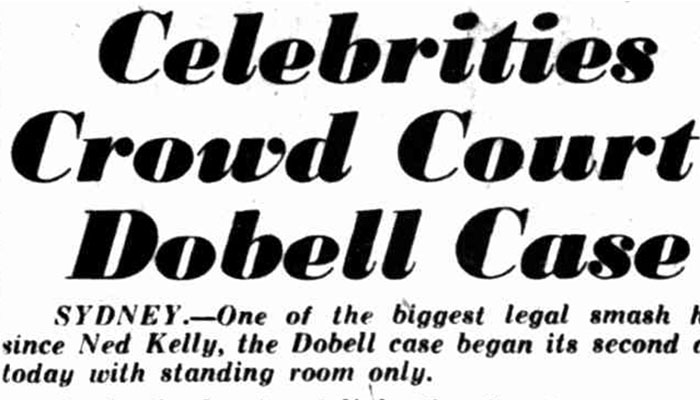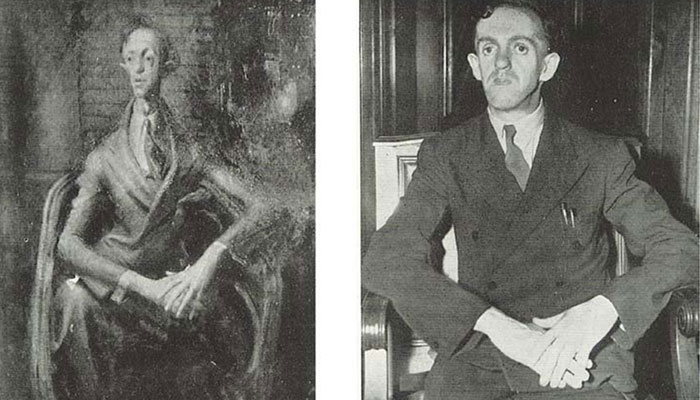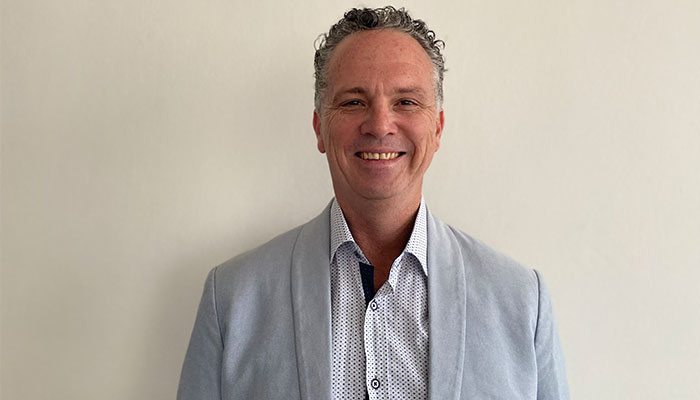A controversial painting. A roll call of Australia’s best artists. A court case. And social commentary that divided public opinion in war-time Australia. It’s all there in a new book that has been nominated for a prestigious Australian literary prize.

Talk of the town: crowds flocked to the NSW Art Gallery to view the controversial 1944 winning portrait of artist Joshua Smith.
by Macquarie University historian Peter Edwell has been shortlisted for the Prime Minister’s Literary Awards and tells the story of the court case and controversy surrounding the winner of the 1944 Archibald Prize.
Edwell has been praised for making a substantial contribution to Australian art history in his book, which features a who’s who of the art world at the time, and those in the highest offices of power in the first half of 20th century Australia.
“I spent around four years using the research skills I’d gained as an ancient historian to piece together the controversy and dramatic court case that followed William Dobell’s winning of the Archibald Prize for his boundary-pushing portrait of fellow-artist Joshua Smith,” says Edwell.
“What made the win controversial was that Dobell’s painting was different to past winners and it was linked to the influences of modernism and caricature. There was also the belief that Smith was rendered in a way that suggested he was gay at a time when homosexuality was against the law,” says Edwell.
… the deeper I delved, the more I realised this was a huge story in Australia in the 1940s. It even competed with World War 2 on the front pages of newspapers.
Adding another layer of intrigue to this rollicking story is that Edwell’s great aunt, the artist Mary Edwards, was the main protagonist who brought the legal case arguing that the portrait depicted Smith in a “distorted and caricatured form”.
“While I initially started researching the topic out of interest in my great aunt’s involvement, the deeper I delved, the more I realised this was a huge story in Australia in the 1940s. It even competed with World War 2 on the front pages of newspapers when it went to court in October 1944,” says Edwell.
“The Archibald Prize was the world’s richest portrait prize and whoever won it became a household name. Mary got a committee together and led the protest. She was the one who filed the papers in the Supreme Court to have Dobell’s win overturned,” he says.
Controversy in court
Edwell’s book is the only complete study of the dispute. And he says he tells the story mostly using original archival material.
The Archibald was first awarded in 1922, after the receipt of a bequest from J. F. Archibald, the founder of the Bulletin magazine. Edwell says the prize has always courted controversy and the terms of Archibald’s will entrenched conservatism in awards of the prize.

Headlines: How the Newcastle Sun reported the Sydney art world scandal on 25 October 1944.
“The Trustees of the NSW art gallery were the judges of the prize and they were a factionalised group comprised of business people, architects and the like. Among them was the Chairman of David Jones and Marcus Clark, who owned another major department store. Another was Jim McGregor, Australia’s biggest wool manufacturer. Only two of the Trustees were artists and Lionel Lindsay, the most influential of them, was a controversial figure and strongly anti-Semitic,” he says.
“The aggrieved artists claimed that some of the trustees owned paintings by Dobell and awarded the prize to him to improve their value. The objecting artists claimed there was no transparency and that the Trustees were playing favourites,” says Edwell.
“The case has always been spoken about as a breakthrough for modernism because the objecting artists lost the case. But in my view, the furore entrenched conservatism in awarding the prize because the trustees were frightened by the prospect of more furores in the future,” he says.

Life imitating art: Dobell’s winning portrait and its subject, fellow artist Joshua Smith.
Edwell adds that his great aunt would ‘probably not’ approve of his book as it is sympathetic to Dobell and exposes the forces that were at play in resisting progress in Australian art.
“I’m not proud of the stance my great aunt took and I don’t like the abuse Dobell suffered. I believe Mary would have preferred I told a more one-sided story but at the same time I do present her perspective in far greater detail than has ever been done before,” says Edwell.
Edwell says he has tried to present an account of the controversy that tells all sides of the story. “We live in a world that simplifies debates in terms of good vs evil but people and situations are often complex and sometimes unpredictable. In analysing this controversy, I hope I’ve been able to show that we always need to take a step back and evaluate events rather than diving in on one side or the other without all of the information first.”
The Case that Stopped a Nation: The Archibald Prize Controversy of 1944, by Peter Edwell (Halstead Press, RRP $39.95). To order a signed copy from the author, .

Author (pictured) Senior Lecturer, Deputy Director (Research) Australian Centre for Ancient Numismatic Studies, Department of History and Archaeology, Macquarie University, Sydney.






